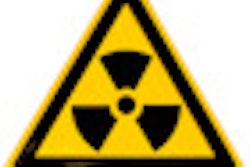
Patient dose audits employing vast numbers of electronic examination records obtained from a radiology information system are feasible, and by using existing x-ray tube calibration data, an IT-based approach is a cost-effective method for both patient dose and clinical audit, U.K. researchers have found.
"Statistical analysis of the resulting patient dose dataset indicates that mean ESD [entrance surface dose] values can easily be obtained and used to establish LDRL [local diagnostic reference level] and RDRL [regional diagnostic reference level] values together with associated realistic tolerances and limiting values for use in optimization strategies," noted Paul Charnock, a clinical scientist at Integrated Radiological Services in Liverpool, and colleagues. "Data-cleansing techniques ensure that any erroneous or rogue data can be filtered from the process."
They think the methods described in their article published on 7 May 2013 in Radiation Protection Dosimetry are equally applicable to other x-ray imaging modalities.
The authors' aim to demonstrate that patient dose audits may be undertaken at the local and regional levels by employing electronic records that are contained in a RIS and have been collected, analyzed, and managed by modern IT systems. They wanted to show that resulting mean and third quartile values obtained can be used to establish local and regional dose reference levels (DRLs) as part of an optimization strategy.
The group collected around 1.3 million radiographical examination records stored in a RIS over a three-year period from 10 hospital sites in the north of England. These records were analyzed according to the process employed in the national patient dose audits undertaken every five years in the U.K. Because RIS data involve manual data entry, they may be susceptible to data entry errors, so a comparison of results obtained from both RIS and DICOM-generated data was undertaken to "calibrate" the RIS-based method and demonstrate its accuracy.
"The results obtained from this comparison indicate that the RIS-based examination records provide patient dose distributions with an equivalent statistical accuracy compared with those employing DICOM data and, therefore, may be employed in patient dose audits in order to establish both local and regional DRLs for use in patient dose management and optimization strategies," they wrote. "Mechanisms that allow patient doses to be assessed relatively easily and frequently to different population groups can help to stimulate effective optimization strategies within the field of medical radiation protection."
The diagnostic reference level is an important mechanism for the management of patient dose to ensure it is commensurate with the medical purpose of the x-ray examination, according to the authors. The guiding principles for setting a diagnostic reference level are that the regional, national, or local objective is clearly defined, including the degree of specification of clinical and technical conditions for the medical imaging task; the selected value of the diagnostic reference level is based on relevant regional, national, or local data; and the quantity used for the diagnostic reference level can be obtained in a practical way.
There are many advantages in using the readily available examination details that are recorded on a RIS, but DICOM-based records are another source of data, which contain the same examination parameters as RIS and therefore require the same tube calibration information in order to calculate entrance surface dose, they explained. DICOM has the advantage of not requiring any human input because they are created automatically as part of the overall image dataset, but these records are only available for direct digital imaging systems, whereas a great deal of radiographical workload generally does not employ these systems. Also, access to the relevant DICOM records necessitates the separation of the appropriate examination details from the image dataset before they can be usefully employed.
To remove possible erroneous data, Charnock and colleagues used data-cleansing techniques that may be applied to the raw RIS dataset in order to eliminate any outliers. To test the efficacy of these methods and the validity of the RIS-based approach, they undertook a preliminary study whereby the statistical properties (mean values, standard deviations, third quartile values, etc.) of patient dose distributions obtained from RIS-based records were compared with those obtained directly for DICOM records for the same patient examinations.



















